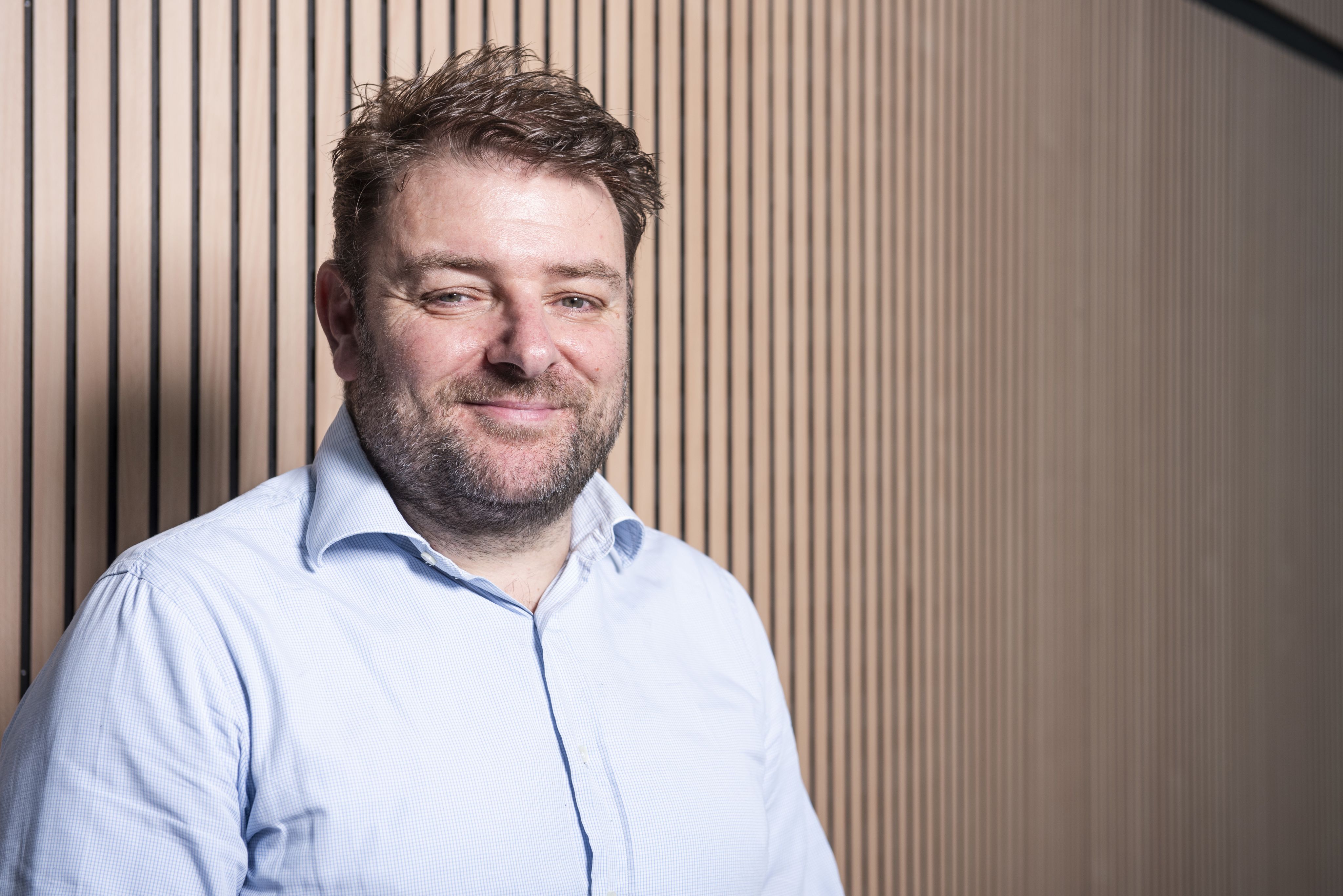Redesigning healthcare
Research at the University of Bath is transforming the NHS through computer modelling

Health and care services worldwide strive to deliver the best patient care. But pressure on resources and competing demands can mean improvements to systems that underpin care delivery get pushed to the back of the queue.
Researchers at the University of Bath’s School of Management are partnering with health and care professionals, policy makers and managers to drive practical, innovative solutions to optimise how resources are used and improve outcomes.
The NHS holds a special place in the nation’s hearts, but the crisis within the system was laid bare by Lord Darzi’s recent independent investigation of the NHS in England. Labelled as ‘broken’ by the Labour government, a 10-year plan is expected in 2025 to reform the English NHS.
New investment and focus will require innovative approaches to make the most of resources and improve services. Expertise at Bath is well positioned to work in collaboration with health and care providers to identify changes that can alleviate or resolve problems in systems. To channel experiences from patients and professionals to improve current ways of doing things, for the benefit of patients, carers, and staff.
During the pandemic experts at Bath helped health professionals working on the front line of Covid care - ensuring vaccination centres were running as smoothly as possible, and applying computer modelling to emotion-laden decisions of who should receive specialist care. Computer modelling of services has improved stroke care, and devised new models for patient discharge from hospital to maximise bed capacity, and prevent overcrowding.
From early in his career in healthcare management science, Professor Christos Vasilakis knew he wanted to apply his technical skills to the NHS - playing a part in improving decisions to benefit people’s health and their healthcare experiences.
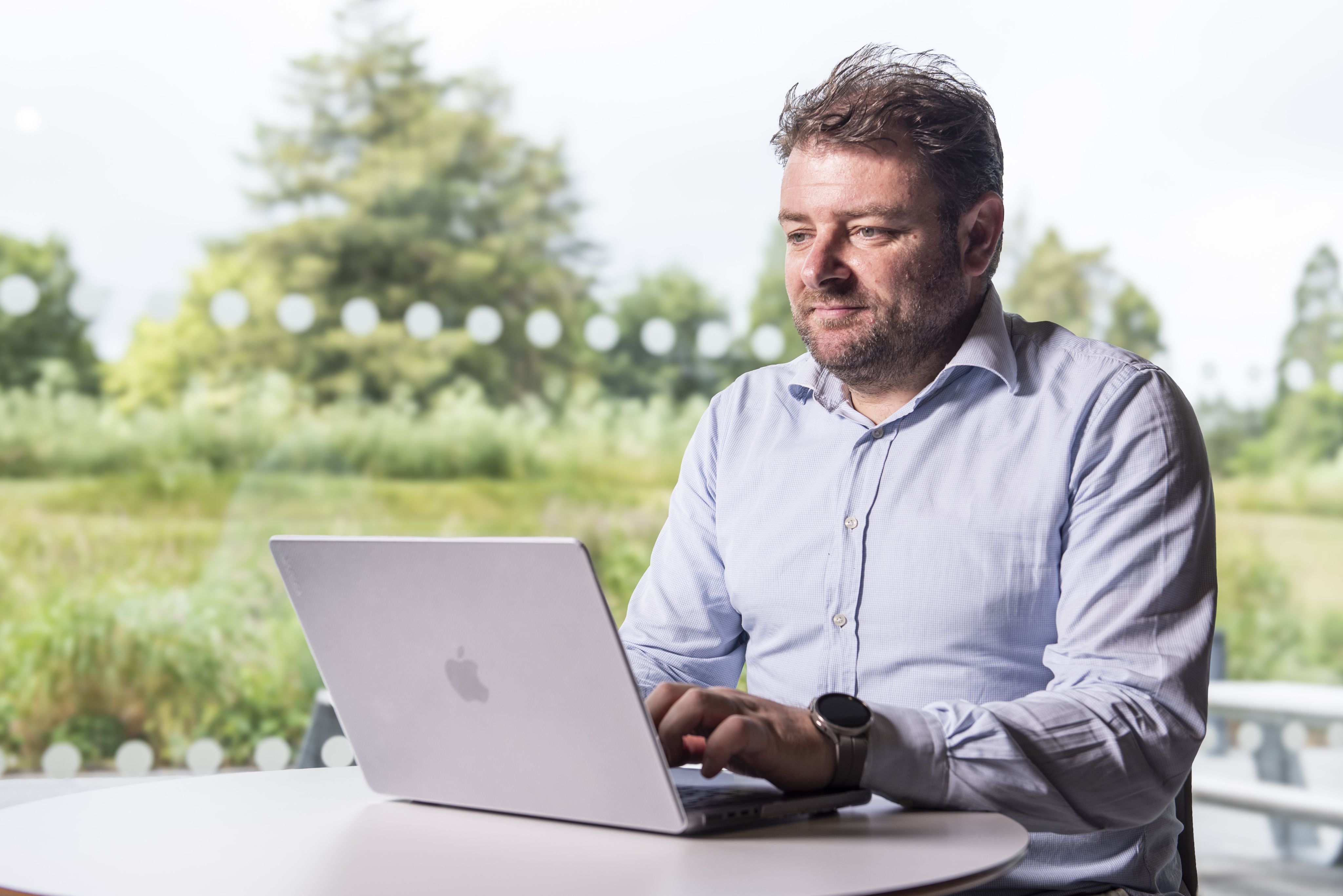
Professor Vasilakis set up the Centre for Healthcare Innovation and Improvement (CHI²) in late 2014 at the University's School of Management. The centre has led projects across the region in collaboration with NHS managers, analysts and clinicians, to help the NHS address service delivery challenges. To date the centre has received over £1 million in contracts to research healthcare issues in the region.
Focus groups and workshops with patients and their carers have given him the opportunity to hear people tell their stories and appreciate how his work will touch upon the problems they face.
“It’s not like running a factory. You don’t have widgets running through a production line. You have human beings with dreams and fears and their own minds. That makes the kind of research methods that I apply so challenging but ultimately so rewarding.”
The research centre uses advanced analytical methods and complex computer modelling to help managers and clinicians decide what changes to introduce to the way services operate, aided by qualitative research methods and direct observations.
Systems modelling and computer simulation tools take the strain – allowing teams to try out different options and help assess the likely impact of changes on everything from staffing rotas, to communication between different departments, to the size of the service.
“Using computer models we can try out different solutions to healthcare problems without experimenting in the real life system – which would be very difficult to do in most cases. It allows us to take a view on what kind of improvements will be more beneficial than others.
“Clinicians and healthcare managers can then continue on their improvement journey with better evidence about what is most likely to work and, perhaps just as importantly, not work. It makes clear where precious budgets can be best spent.”
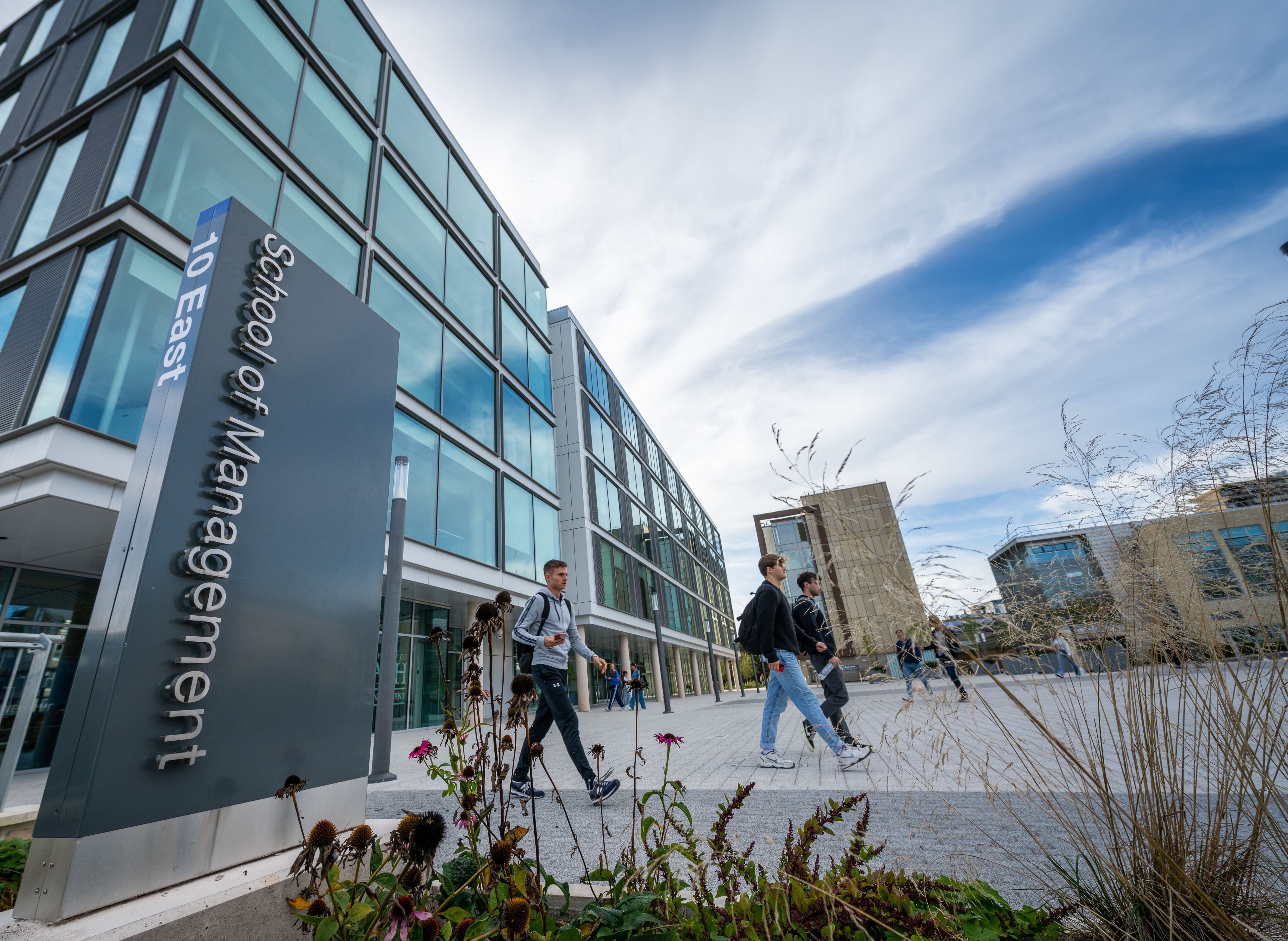
On the NHS Covid frontline
In February 2020 Professor Vasilakis began a research sabbatical at Stanford University, working on advanced analytical projects at the world-leading Lucile Packard Children’s Hospital Stanford.
He’d been in the US for two weeks - received the key to his office, given a couple of guest lectures and met students and fellow professors when he had to return to the UK for an event with his research centre.
He wasn’t to return to Stanford the following month as planned. The Covid-19 pandemic had hit. International travel grounded to a halt, and lockdowns came into force as Covid cast its shadow across the world.
In this dark time, the Centre for Healthcare Innovation and Improvement was to find a calling for its research skills that would help to prevent avoidable hospital deaths from Covid, and steer others to protection against the deadly disease.
“As Covid spread, our hospitals and intensive care services were quickly overwhelmed,” says Professor Vasilakis. “Clinicians in Bristol asked us a crucial question: How much should we expand critical care to handle the anticipated surges in demand?
“The project began in late March 2020 and we interviewed intensive care staff on Zoom. They would break from their shift to talk to us in full PPE, answering our questions to help us calculate how much capacity to add.
“Talking to healthcare professionals who were clearly exhausted, working long shifts, then going home to their families, with all the risks that entailed, was a humbling experience.”
Professor Vasilakis and his team were able to use similar methods from their work in stroke services and adapt its use to predict need in intensive care, to help more people receive treatment.
Together with NHS Bristol, North Somerset and South Gloucestershire Integrated Care Board (NHS BNSSG ICB) and University Hospitals Bristol NHS Foundation Trust, they developed a modelling methodology and open access tool to set out how critical care provision could be best used to save lives.
It supported intensive care staff in the most difficult of decisions – how to triage who takes priority for intensive care beds. “Modelling is very good when there are difficult decisions to be faced,” says Professor Vasilakis. “You can test out the answers without needing to do anything on the ground.
“You can explore the likely impact of policies and use the results to inform not only decisions around care capacity but also considerations around the ethical implications and consequences of these decisions.”
Read the research:
COVID-19 scenario modelling for the mitigation of capacity-dependent deaths in intensive care
The value of triage during periods of intense Covid-19 demand: simulation modeling study
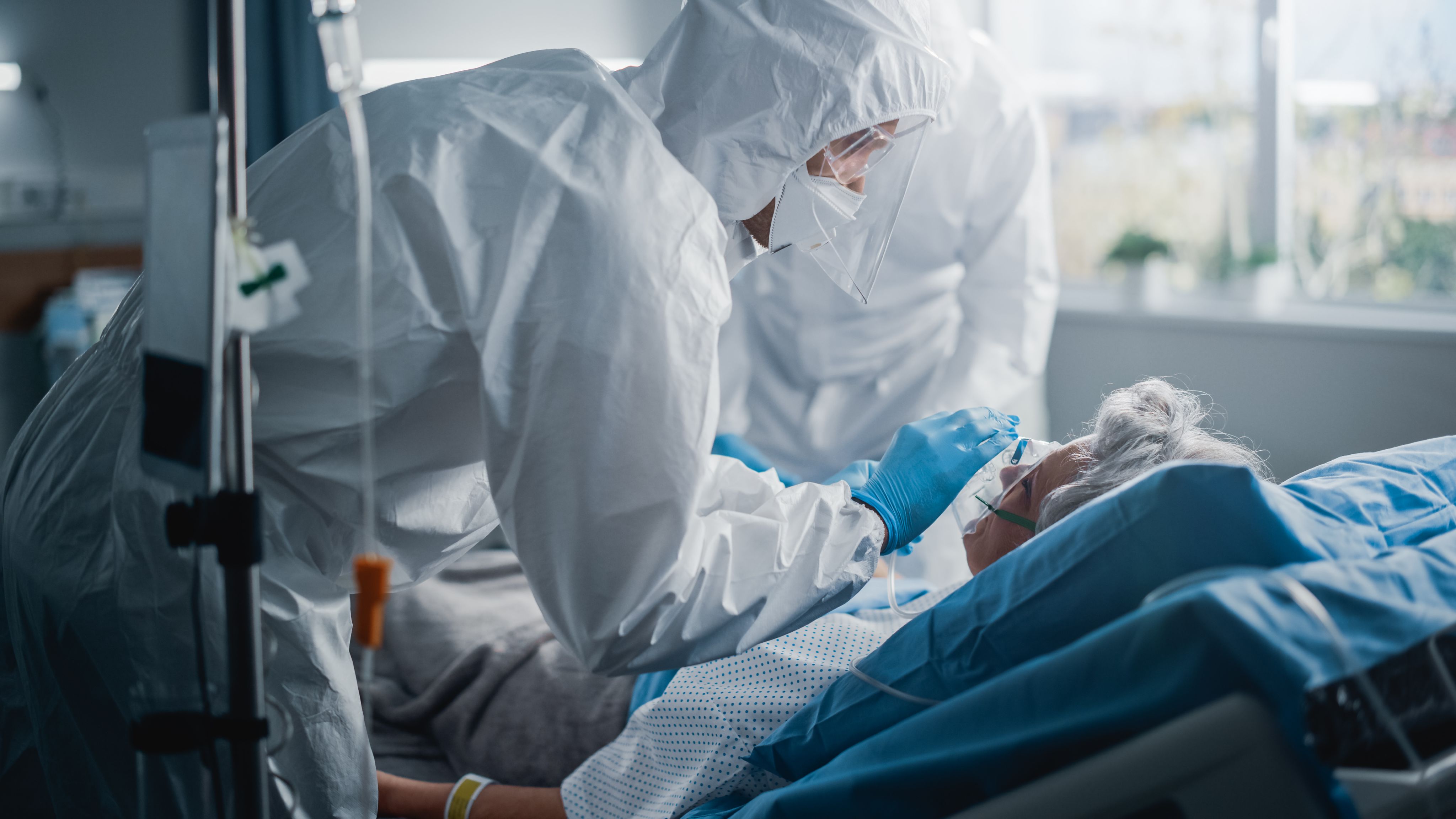


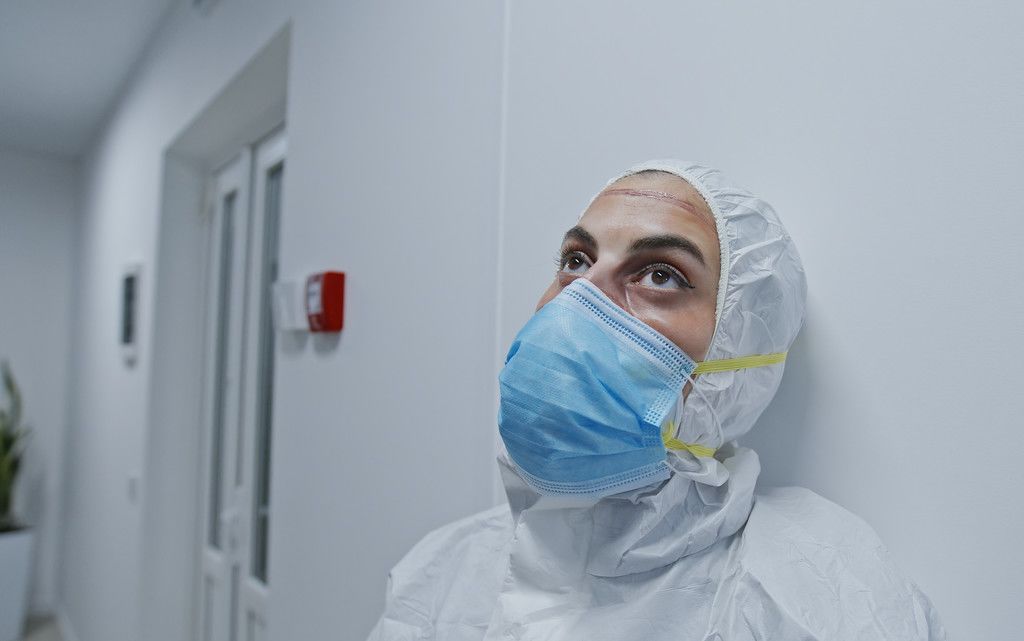

“As Covid spread, our hospitals and our intensive care services were quickly overwhelmed,” says Professor Vasilakis. “Clinicians in Bristol asked us a crucial question: How much should we expand critical care to handle the anticipated surges in demand?"
“The project began in late March 2020 and we interviewed intensive care staff on Zoom. They would break from their shift to talk to us in full PPE, answering our questions to help us calculate how much more capacity to add.
“Talking to healthcare professionals who were clearly exhausted, working long shifts, then going home to their families, with all the risks that entailed, was a humbling experience.”
Professor Vasilakis and his team were able to use similar methods from their work in stroke services and adapt its use to predict need in intensive care, to help more people receive treatment.
Together with NHS Bristol, North Somerset and South Gloucestershire Integrated Care Board (NHS BNSSG ICB) and University Hospitals Bristol NHS Foundation Trust, they developed a modelling methodology and open access tool to set out how critical care provision could be best used to save lives.
Modelling also gave intensive care staff support in the most difficult of decisions – how to triage who takes priority for intensive care beds. “Modelling is very good when there are difficult decisions to be faced,” says Professor Vasilakis. “You can test out the answers without needing to do anything on the ground.
“You can explore the likely impact of policies and use the results to inform not only decisions around care capacity but also considerations around the ethical implications and consequences of these decisions.”
Read the research:
COVID-19 scenario modelling for the mitigation of capacity-dependent deaths in intensive care
The value of triage during periods of intense Covid-19 demand: simulation modelling study
From January 2021, Professor Vasilakis and his team were on the frontline of work to prevent the spread of Covid and bring down the UK’s spiralling death rate.
They were given access to the NHS vaccination centre at Ashton Gate Stadium in Bristol to make recommendations on safe and effective set-up for the thousands of members of the public anticipated to visit the site a week, and multiple others across the UK.
“I ordered myself a stopwatch online and used an old coaching clipboard I had at home, and then I was spending 12 hours at a time at several vaccination centres,” says Professor Vasilakis.
“The idea was to get the centres running as efficiently as possible – so a team of us was timing arrivals, registration, assessment, vaccination and recovery. We were gathering data to work out how many people could be safely vaccinated each day, with social distancing in place, as well as spatial requirements.”
Professor Vasilakis went on to observe the operation of a GP-led vaccination centre in Swindon to advise on managing likely disruptions to the system –late arrivals in the event of a major traffic incident, or vaccinators absent with Covid. And to study the vaccination processes at centres at Bath Racecourse, Swindon STEAM and Salisbury Cathedral.
He says the Covid work is one of his proudest achievements for his research centre. An early part of the research was to become the first Covid vaccination centre modelling work published in the journal Vaccine by June 2021, and it was runner-up for the President’s Medal awarded by the Operational Research Society.
“To know that we have helped people around the world, let alone this country, to think about how to set up their vaccination centres, is really quite something.”
Read the research:
Operational research for the safe and effective design of COVID-19 mass vaccination centres
Improving COVID-19 vaccination centre operation through computer modelling and simulation
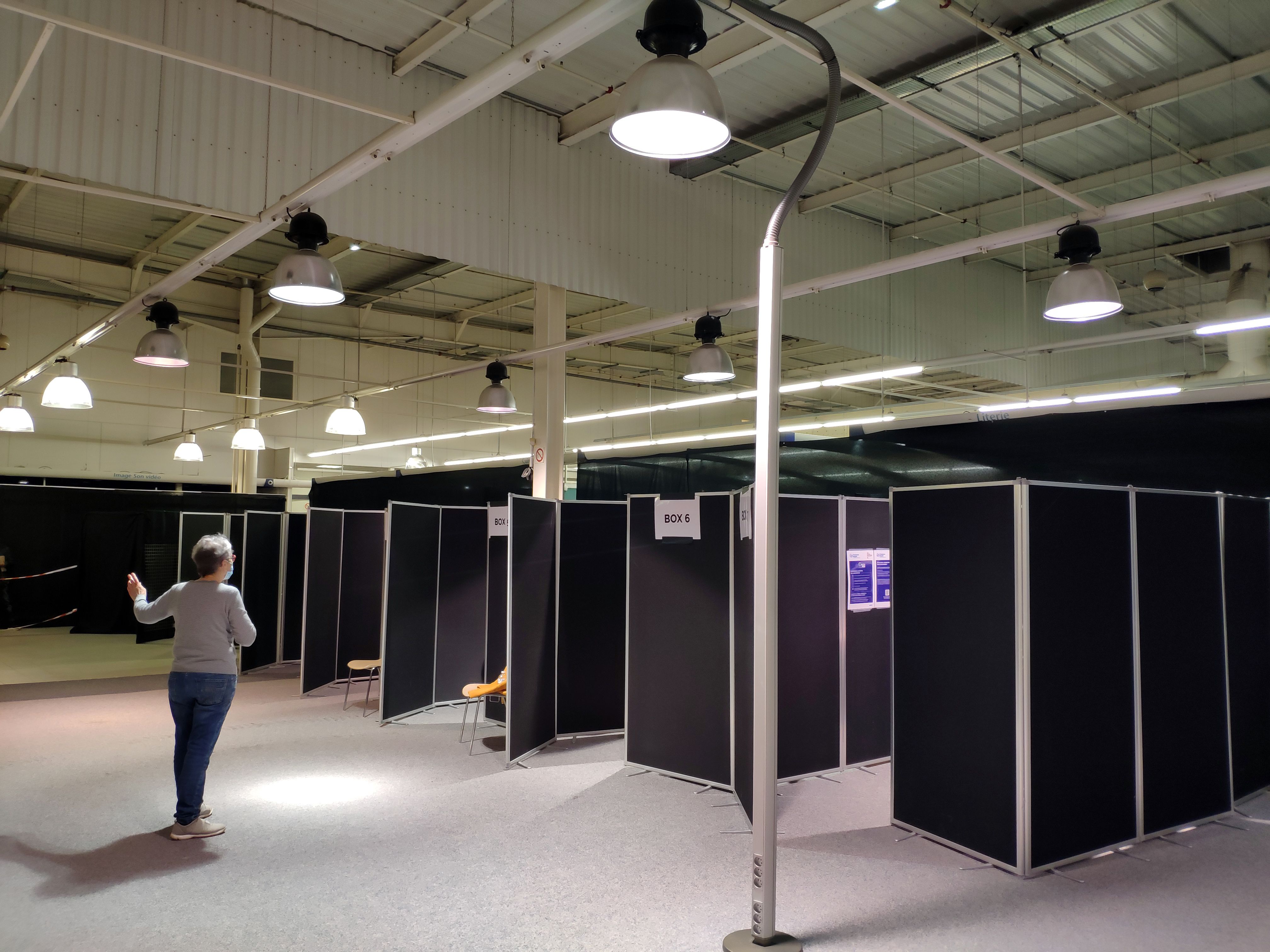
From January 2021, Professor Vasilakis and his team were on the frontline of work to prevent the spread of Covid and bring down the UK’s spiralling death rate.
They were given access to the NHS vaccination centre at Ashton Gate Stadium in Bristol to make recommendations on safe and effective set-up for the thousands of members of the public anticipated to visit the site a week, and multiple others across the UK.
“I ordered myself a stopwatch online and used an old coaching clipboard I had at home, and then I was spending 12 hours at a time at several vaccination centres,” says Professor Vasilakis.
“The idea was to get the centres running as efficiently as possible – so a team of us was timing arrivals, registration, assessment, vaccination and recovery. We were gathering data to work out how many people could be safely vaccinated each day, with social distancing in place, as well as spatial requirements.”
Professor Vasilakis went on to observe the operation of a GP-led vaccination centre in Swindon to advise on managing likely disruptions to the system –late arrivals in the event of a major traffic incident, or vaccinators absent with Covid. And to study the vaccination journeys at centres at Bath Racecourse, Swindon STEAM and Salisbury Cathedral.
He says the Covid work is one of his proudest achievements for CHI². An early part of the research was to become the first Covid vaccination centre modelling work published in the journal Vaccine by June 2021, and it was runner-up for the President’s Medal awarded by the Operational Research Society.
“To know that we have helped people around the world, let alone this country, to think about how to set up their vaccination centres, is really quite something.”
Read the research:
Operational research for the safe and effective design of COVID-19 mass vaccination centres
Improving COVID-19 vaccination centre operation through computer modelling and simulation
A new standard for stroke care
Building strong relationships with healthcare teams in the region has opened doors to apply the centre's research methods in hospitals local to the University. In 2015 a research residency at the Royal United Hospitals Bath (RUH) initiated collaboration on quality improvement projects. Acute stroke care was its first focus.
According to the Stroke Association over 100,000 people have strokes each year in the UK and it’s a leading cause of death. For patients who arrive at hospital with a stroke, quick diagnosis and treatment is key to recovery. Effective treatment can prevent long term disability and save lives.
Work at the hospital looked at the challenge of applying the National Clinical Guideline for Stroke to the acute stroke service. The guidelines set out requirements for patient care, from the moment they arrive at hospital.
“Like all busy hospitals, the challenge of applying important national guidelines is how to do that effectively when there are so many competing demands,” says Professor Vasilakis. “However, having a researcher present on a ward, asking questions, is a valuable catalyst for people to spend time reflecting on practice and how they go about doing things.”
Data analysis, interviews with staff and patients and extensive conceptual modelling revealed areas for innovation - including creating more bed space on the ward for patients with ischaemic stroke to receive thrombylosis - a treatment to dissolve blood clots and restore blood flow to the brain, previously managed solely in the Emergency Department.
Dr Robin Fackrell, then Divisional Director for Medicine at the RUH, said: “The research was crucial in identifying areas of the pathway that were not working, the key barriers to implementation and the ways these could be addressed.”
In the three years of the research project, Bath’s stroke service rose from the lowest to highest ratings in the Sentinel Stroke National Audit – a major national healthcare quality improvement programme. And an inspection report by the Care Quality Commission stated that improvements to Bath’s acute stroke care were above the national average.
Read the research:
Implementing standardised flow: navigating operational and professional dependencies
Centralising services
The national approach to effective stroke care is to centralise specialist services within a region – and Professor Vasilakis and his team worked with the NHS Bristol, North Somerset and South Gloucestershire Integrated Care Board (NHS BNSSG ICB) to achieve this for its population of over one million people.
Developed in collaboration with Dr Richard Wood, Head of Modelling and Analytics at BNSSG and visiting senior researcher at the University of Bath, systems modelling and simulation tools helped to make decisions about the number and size of specialist units needed and how many patients they could expect to treat.
The tool modelled the dynamics of patient demand and bed capacity, linking the different existing and suggested hospital wards. Presented visually as a network of queues, it allowed managers and clinicians to see patient flow, bottlenecks and delays, and enabled valuable ‘what if?’ analysis to test out the likely impact of different scenarios.
During the Covid-19 pandemic the modelling tool was to find a life-saving role in setting out how critical care provision could be used most effectively.
Funded by a grant for Advancing Applied Analytics from The Health Foundation, it is now an open source patient pathway simulation tool available to health researchers and managers in other areas.
Read the research:
Optimising acute stroke pathways through flexible use of bed capacity: a computer modelling study
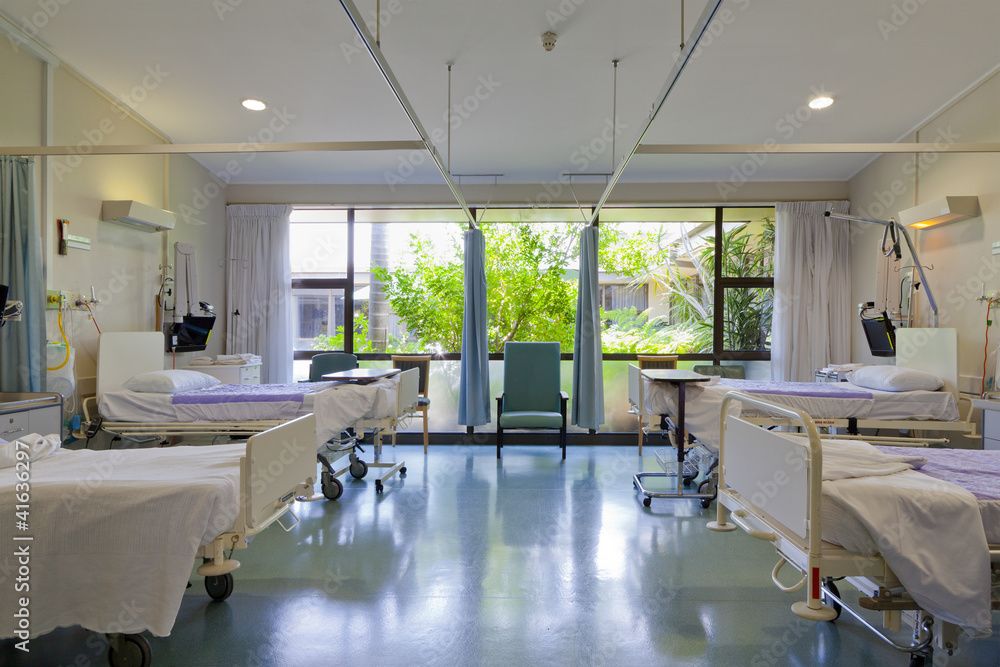
Delayed patient discharge from hospital
Ambulances queuing to admit patients to Emergency Departments is a familiar sight, as hospitals grapple to achieve a smooth flow of patients out of hospital, to admit new patients.
“It’s not a new problem for the NHS - in the late 90s headlines raged about the winter bed crisis that was hitting hospitals hard," says Professor Vasilakis.
“People at the time wanted to explain away the bed crisis by blaming the effects of winter, more falls, illness and so on, but basic operational analysis showed the main problem was not enough patients being discharged from hospital, especially during the Christmas holiday period. The social care provision was nowhere near the capacity that was needed.
“In the early 2000s Government made a massive investment into the NHS and social care which led to clear improvements. But now, after the financial crisis, austerity and other political decisions, plus the impact of the pandemic, we are back to the discharge crisis. Back to where we were 25 years ago when I was working on my PhD. Compounded by workforce shortages in the NHS and social care.”

The challenges faced by the NHS
1 in 5 patients need community care when they leave hospital
These are often older, vulnerable people needing ongoing care and assessment beyond the hospital ward.
For six weeks this is funded by the NHS (Discharge to Assess or D2A) and enables assessment for long term social care needs.
Delayed discharge leads to a decline in mobility and functional ability
All too often patients ready for discharge can find themselves stranded in hospital- ready to leave acute care, but without access to community services.
Delayed transfer of care can lead to a decline in mobility and functional ability.
Even for healthy older people it has been estimated that 10 days of bed rest can equate to 10 years of muscle ageing, with consequent loss of function.
500,000 acute bed days lost per year due to delays in discharge
It's a statistic reported by HDRUK in 2019, it says directly attributable to non-availability of social care.
The knock-on effect is overcrowding in Emergency Departments, as bed managers struggle to find space for patients needing hospital admission and ambulances queueing to offload patients.
The National Audit Office estimates that the gross annual cost to the NHS of treating older patients in hospital who no longer need to receive acute clinical care is in the region of £820 million.
A smoother patient pathway
Against this challenging backdrop, Professor Vasilakis and his team chose to focus on the discharge of patients from acute care as a priority area to benefit from modelling.
The question was: How much provision is needed in the six-week period of community services to minimise the number of people whose discharge from hospital is delayed.
Dr Zehra Onen Dumlu, from Bath's research centre, worked on the IPACS project (Improving Patient flow between Acute, Community and Social care) with colleagues from the University of Exeter and the NHS Bristol, North Somerset and South Gloucestershire Integrated Care Board (NHS BNSSG ICB).
The project was funded by the Health Data Research UK (HDRUK) Better Care South-West Partnership.
“The main objective of the project was to find an ‘optimal balance’ of capacity along different parts of the complex care discharge pathways - to help managers make decisions to improve the system and ultimately people’s lives.”

Patient flow: from Acute to D2A pathways
The simulation tool developed by Dr Onen Dumlu and colleagues from the IPACS team shows how capacity constraints can impact outcomes such as delays to acute care, and how much capacity is needed for a particular timeframe.
It also assesses how responsive total spend in the local health and social care economy might be in relation to community-based care capacity. It can handle different ‘what if’ scenarios to look at the impact of demand, length of stay or capacity changes.
While a long way from the current reality on hospital wards, the expectation was that eliminating the delay to discharge would be the goal. In fact, the research showed a surprising result. A small amount of waiting time between the different stages was optimal from an operational perspective, ensuring there was no idle capacity in the system.
“Using the tool and the theory behind it reveals that a zero-discharge queue is not the optimal policy to go for. Rather, having a minimal queue will help the system to work properly, and keep it economical. We found that aiming for zero queue increased costs substantially, with minimal gain in terms of how many people were moved from acute to community care,” says Dr Onen Dumlu.
“The bonus of our work is that it allows for people to see how one area impacts another. To see the whole picture. To materially understand why not investing in one part of the system will create different problems elsewhere in the system, and what those problems would look like.”
Dr Onen Dumlu says that the success of the tool lies in its focus on communication between different parts of the system - between acute and community services.
“What makes this tool rather special is that it can link hospital wards and health services provided in community settings. It has the potential to map how patients travel through the wider healthcare system to get a better understanding of the bottlenecks.
“Seeing it in practice is why I decided to go into healthcare operations management,” says Dr Onen Dumlu. “It’s very fulfilling to know that it's making a positive difference to people’s health. I’m proud to provide clinicians with the decision support tool, knowing that it will mean they can focus on their patients’ health rather than decisions about the system, and that it can be used in other parts of the UK and ultimately the world.”
The model and simulation experiments were used to inform decisions about increased D2A capacity to manage the surge of Covid patients requiring hospital discharge in 2022. Analysts within the Bristol ICB are now using the tool to inform month by month capacity decisions.
Dr Richard Wood, Head of Modelling and Analytics at BNSSG ICB and Visiting Research Fellow at the University of Bath’s School of Management, said: “The insights from the pathway simulation model played a key role in our decisions around the benefits of expanding the existing stock of critical care beds from pre-pandemic levels to different levels of ‘surge capacity’. Our open-source tools were picked up by other areas of the care system to inform workforce planning and resumption of elective surgeries post Covid.
“Collaboration with CHI2 has made practical improvements to our system and marks it out as a preferred partner for healthcare innovation, improvement and analytics expertise in our region.”
Read the research:
A demand and capacity model for home-based intermediate care: optimizing the 'step down' pathway
Optimising the balance of acute and intermediate care capacity for the complex discharge pathway: Computer modelling study during COVID-19 recovery in England
The false economy of seeking to eliminate delayed transfer of care: some lessons from queuing theory
Improving hospital discharge flow through scalable use of discrete time simulation and scenario analysis
The team is now working on dynamic population modelling - designing a model and computer tool to see how different health policies can change the population’s healthcare needs over time. Investigating, for example, how a policy on obesity or tobacco consumption could impact on health, and providing an overview of what might happen in the future – in five, 10 or 20 years’ time. Read more
Unlocking innovation
“Systems modelling, operational research and its application to healthcare is understandably still largely unknown to many healthcare professionals,” says Professor Vasilakis. “When you can bring advanced analytical techniques that people don’t even know exist to a problem you can make quite an impact.”
A professional network for change
The Centre for Healthcare Innovation and Improvement nurtures a network of healthcare professionals from across the West of England who are invited to learn about operations research, quality improvement and find inspiration to make their own improvements.
Maternity services transformed
Maternity services in Bath and North East Somerset, Wiltshire and Swindon asked for help to analyse questionnaires conducted with service users, and Professor Vasilakis was able to explain what could be gained from applying advanced analytical techniques.
Professor Güneş Erdoğan, a world expert in computational logistics from the University of Bath, used methods more usually seen in global businesses to understand the complexities of requirements for the maternity service.
The work involved analysis to identify the optimal locations for maternity services, to ensure that the team could provide accessible, high quality care that increased choice and made the best use of resources.
Read the research:
Analysis of the provision and allocation of maternity services in the RUH catchment area: Final report of the analysis of the geographic allocation of maternity services
Free online courses on benefits of innovation
Professor Vasilakis' team has worked with the West of England Academic Health Science Network to develop free MOOCs (Massive Open Online Course) on Healthcare Innovation and Quality Improvement (CPD accredited).
Just under 40,000 people have enrolled to the courses which introduce key innovation theories, and practical tools and skills for driving change.
“Upskilling professionals in the region, the UK and across the world is a core part of our mission,” says University researcher Dr Rossella Salandra who led on content creation for the healthcare innovation MOOC.
“The course helps people to spot opportunities for innovation, to generate new ideas and to understand the steps involved in improving products, processes and services.”
Shaping the future
The ongoing strain on the NHS, coupled with the rising number of older people needing acute care, seems to highlight the potential of computer modelling research as a key tool for identifying innovations that save time and money.
Research led by Dr Melih Celik from the University of Bath reveals that hospitals can reduce theatre idle times by 40%, significantly improving patient waiting times.
In a study with urology clinics in Turkey he found that preparing patients for surgery in a separate space from the operating theatre frees up operating schedules and staff time.
Parallel processing is not a new idea but the complexity of coordination needed to put it into practice effectively can be prohibitive. The researchers wanted to test out a system that could make implementing the technique feasible.
They used complex models and computer simulations to schedule patient appointments, to assess how effectively the approach reduces waiting time for theatre availability, and also the cost of running these rooms.
Software needs to be developed before the findings can be put to use, and the team wants to set up hospital pilot schemes in Turkey. The researchers hope that it provides an interesting area for exploration by healthcare managers, even if the required investment and adjustment is currently difficult in light of challenges facing the NHS.
Read the research:
A stochastic programming approach to surgery scheduling under parallel processing principle

The reality on the ground is that when services are stretched beyond capacity, finding the bandwidth to think about innovation and improvement becomes a significant challenge. Focus naturally narrows to immediate needs.
“Because NHS managers are typically firefighting, their need for decision support can be on a very tight turnaround,” says Professor Vasilakis. “My long term dream is that decision support units will one day become as integral to the NHS as health economics and medical statistics. A hybrid model, led by NHS people on the ground at regional level working with us and other universities on joint research projects, and benefitting from advanced training for staff.
“Centrally organised units of advanced analysts and modellers could provide rapid response decision support week on week to help services make well informed operational and strategic decisions, to benefit patient care. Decisions that would also make the best use of budgets.”
This future vision comes from his formula for operational research: build strong relationships with NHS decision makers in the South-West region, work with them to grow decision support capability, and replicate the approach in other regions and countries.
“Regardless of resources, questions around improvements to a healthcare system are endless, to ensure it runs efficiently and to budget. Innovation in healthcare systems is vitally important for the future of the NHS, and the kind of care that we want to give people now and for generations to come.”
To work with the Centre for Health Innovation and Improvement, contact Professor Christos Vasilakis
